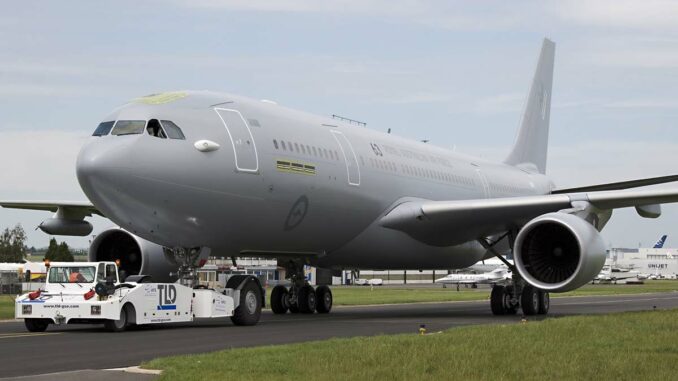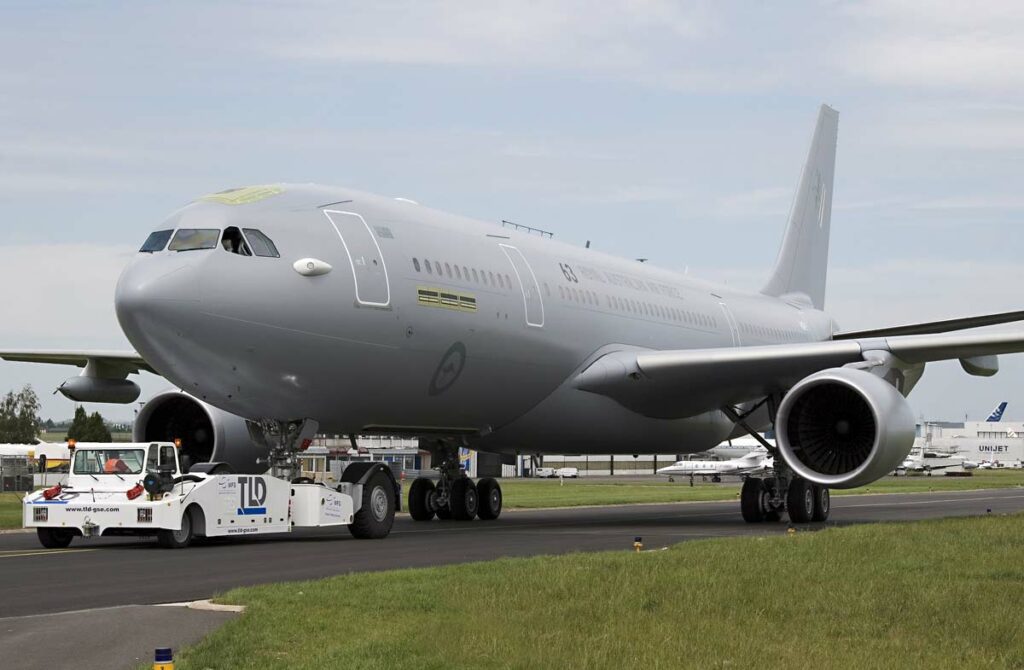
Lockheed Martin is ending its efforts to compete for a US Air Force contract to build the next wave of 75 aerial refueling tankers. However, its partner Airbus will continue to compete for the KC-135 recapitalization. This decision could have major consequences for the aerospace industry and the replacement of the US Air Force’s aging aircraft.
The fierce competition to manufacture the US Air Force’s aerial refueling tankers has undergone a major new development with Lockheed Martin’s decision to withdraw from the race. Lockheed Martin had originally planned to collaborate with Airbus to develop the LMXT strategic tanker, based on the Airbus A330 Multi Role Tanker Transport. However, the company recently announced its withdrawal from the competition, leaving Airbus to pursue its quest alone to win the KC-135 recapitalization contract. In this article, we explore the reasons for this decision, the implications for the aerospace industry and the US Air Force, and the consequences for Boeing, the main competitor.
Lockheed Martin’s withdrawal
Lockheed Martin, one of the major players in the aerospace industry, has taken everyone by surprise by announcing its withdrawal from the competition for the contract to manufacture the US Air Force’s 75 aerial refueling tankers. The company had initially planned to develop the LMXT in partnership with Airbus, but ultimately decided not to respond to the US Air Force’s request for information.
According to Lockheed spokeswoman Stephanie Stinn, several factors contributed to this decision, including the US Air Force’s decision to accelerate the program for the next Next Generation Air-to-Air Refueling System (NGAS). This acceleration prompted Lockheed to reallocate its team and resources from the LMXT project to other programs, including NGAS. Although Lockheed has not disclosed the costs incurred to develop LMXT, it is clear that this decision marks a significant change in the company’s strategy.
Implications for Airbus
Despite Lockheed Martin’s withdrawal, Airbus remains committed to the US Air Force and its air-to-air refueling needs. The company still plans to compete for the KC-135 recapitalization contract by proposing the A330 U.S.-MRTT (Multi Role Tanker Transport), which is considered a reliable and affordable choice for the US Air Force. Airbus believes that the A330 U.S.-MRTT offers proven performance and unmatched capabilities.
Airbus’ decision to go it alone underlines the company’s confidence in its product and its determination to provide the US Air Force with the best tanker possible. It could also strengthen Airbus’ position in the US military aviation market.

Consequences for Boeing
Lockheed Martin’s withdrawal from the competition for the US Air Force tanker contract could have significant repercussions for Boeing, one of Lockheed’s main competitors in this field. Boeing currently manufactures the KC-46 Pegasus, which was selected by the US Air Force for the first phase of KC-135 recapitalization.
With Lockheed out of the running, Boeing could be in a better position to sell more KC-46 Pegasus to the US Air Force. This could strengthen Boeing’s position in the military air-to-air refueling tanker market, and increase its revenue potential.
However, it’s important to note that the competition isn’t over yet. Airbus remains a strong competitor, and its commitment to the A330 U.S.-MRTT means that competition will continue to be fierce. The US Air Force will need to evaluate each company’s bid carefully before making its final decision.
The US Air Force’s reorganizations
Lockheed Martin’s decision comes at a time of reorganization within the US Air Force regarding the recapitalization of the KC-135. Originally, the US Air Force planned to acquire around 150 tankers in the second phase of the recapitalization, and Lockheed had partnered with Airbus to propose the LMXT for this acquisition. However, US Air Force officials had been strongly suggesting that they were leaning towards purchasing modified KC-46s for the next phase for at least a year and a half.
In March, the US Air Force announced a revision of its tanker plans, halving the planned number of tankers for the second phase to around 75. As part of this new strategy, the US Air Force has also accelerated its plans to acquire the NGAS.
Lockheed Martin’s withdrawal from the competition for the US Air Force tanker contract marks a significant turning point in the landscape of the US military aerospace industry. This decision paves the way for fierce competition between Airbus and Boeing to win the KC-135 recapitalization contract. It could also have an impact on the future of the US Air Force and how it modernizes its air-to-air refueling tanker fleet.
It will be interesting to follow the evolution of this competition and see how Airbus and Boeing respond to the US Air Force’s air-to-air refueling needs. One thing is certain: competition in this field is fierce, and the stakes are high, both for the companies and for the US Air Force itself. The next few months will be decisive in determining who wins this crucial contract, and will influence the future of military aviation in the United States.